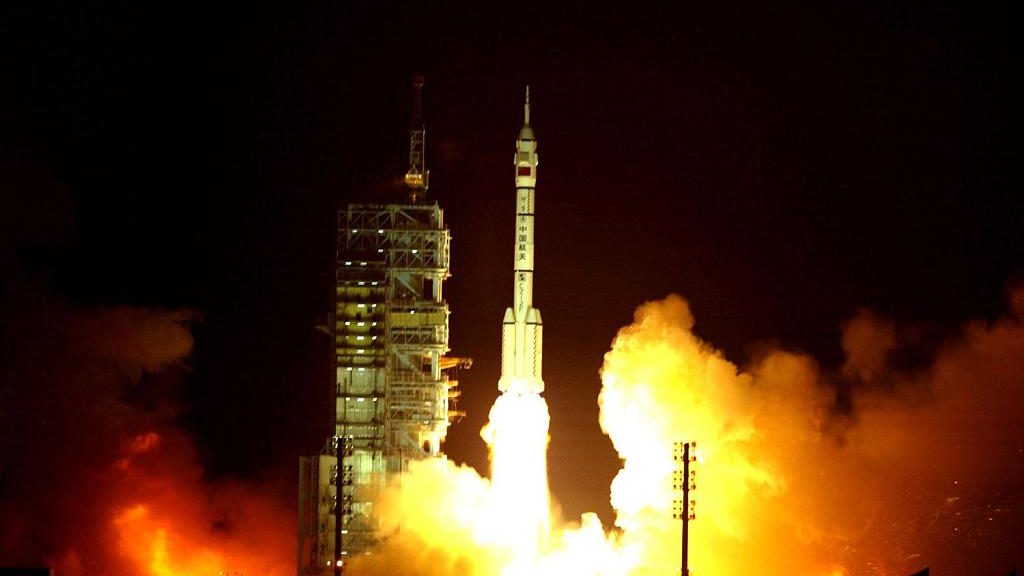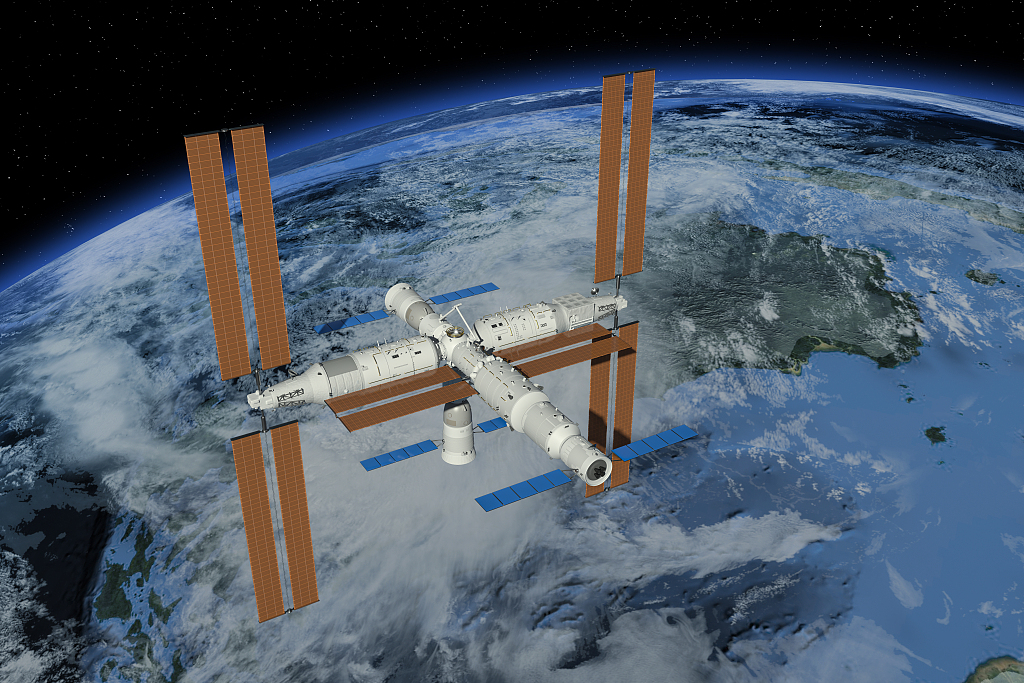
Shenzhou-4 spaceship is launched at Jiuquan Satellite Launch Center in Northwest China, December 30, 2002. /CFP
Shenzhou-4 spaceship is launched at Jiuquan Satellite Launch Center in Northwest China, December 30, 2002. /CFP
Among all milestones in China's manned space program, the Shenzhou-4 flight mission marks a major turning point.
In 1992, the Chinese government prescribed a "three-step development strategy" for the manned space program, which set three different phased goals.
The first stage was aimed to launch a manned spaceship and bring astronauts back safely. From 1999 to 2002, China launched four experimental manned spacecraft with no crew, among them the Shenzhou-4 mission was the last "rehearsal" before a real manned mission.
The mission can be recognized as a milestone for establishing China's crew transportation system for its manned space activities, Yang Yuguang, vice chair of the Space Transportation Committee of the International Astronautical Federation, told CGTN.
Unmanned test flights are very necessary to ensure the safety of astronauts in subsequent manned missions, Yang said.
The Shenzhou-4 spaceship was launched 20 years ago on December 30, flew in space for 6 days and 18 hours as planned and circled the earth 108 times before the return.
What is the Shenzhou-4 mission?
During the flight, the mission tested the compatibility between Long March-2F carrier rocket and the spaceship, as well as safety-guarantee systems, including the launch site system, astronaut system, telemetry, tracking and command (TT&C) system, landing site system, and application system.
The accuracy of the orbital maneuver was tested when the spaceship was in orbit, besides monitoring air pressure, components and other atmosphere parameters.
The separation of the orbital module, the separation of the propulsion module, and the deployment of parachutes were excellent during its return, according to Yang. The re-entry to earth also tested if the heating shield that worked on a very crucial condition kept a very comfortable temperature inside the reentry capsule.

The basic T-shaped structure of the China Space Station is completed. /CFP
The basic T-shaped structure of the China Space Station is completed. /CFP
China's space station to be completed
China's latest manned mission, the Shenzhou-15, just blasted off from Jiuquan Satellite Launch Center in northwestern China on November 29, carrying three astronauts.
The Shenzhou-15 trio successfully completed an in-orbit rotation with the crew of the Shenzhou-14.
The Shenzhou-15 crew will witness the arrival of the Tianzhou-6 cargo spacecraft and Shenzhou-16 manned spaceship during their stay.
With both Wentian and Mengtian lab modules docked with the Tianhe core module, China's space station has formed a T-shaped configuration.
The final construction of the space station is being wrapped by the Shenzhou-15 mission, which will also kick off the first stage of its application and development.
Read more:
Highlights of 30 years of China's manned space program
(Guo Meiping also contributed to the story.)